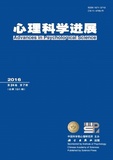Self-generated drawing is a learning strategy in which learners rely on a written text to construct representational drawings that correspond to the main elements and relations described in each portion of the text. Previous studies have examined the role of self-generated drawing in learning by manipulating text, animation and other learning materials. However, it remained various mixed results of the effects of self-generated drawing. From the perspectives of generative theory of drawing construction (GTDC) and cognitive theory of multimedia learning (CTML), self-generated drawing can improve students' cognitive and metacognitive abilities, stimulate the positive emotional state and result in better retention or comprehension. In addition, cognitive load theory (CLT) might predict the opposite result of learning for the reason that drawing brings about an increase of extraneous cognitive load. In general, the self-generated mapping strategy is conducive to learning, the median effect sizes are dretention = 0.13, dcomprehension = 0.46, dtransfer = 0.38. The inconsistent results may be explained by the existence of potential boundary conditions, such as support, test methods, and prior knowledge, to name a few. Future studies should focus on the moderating effects of material manipulation, effectiveness evaluation, and other variables.




